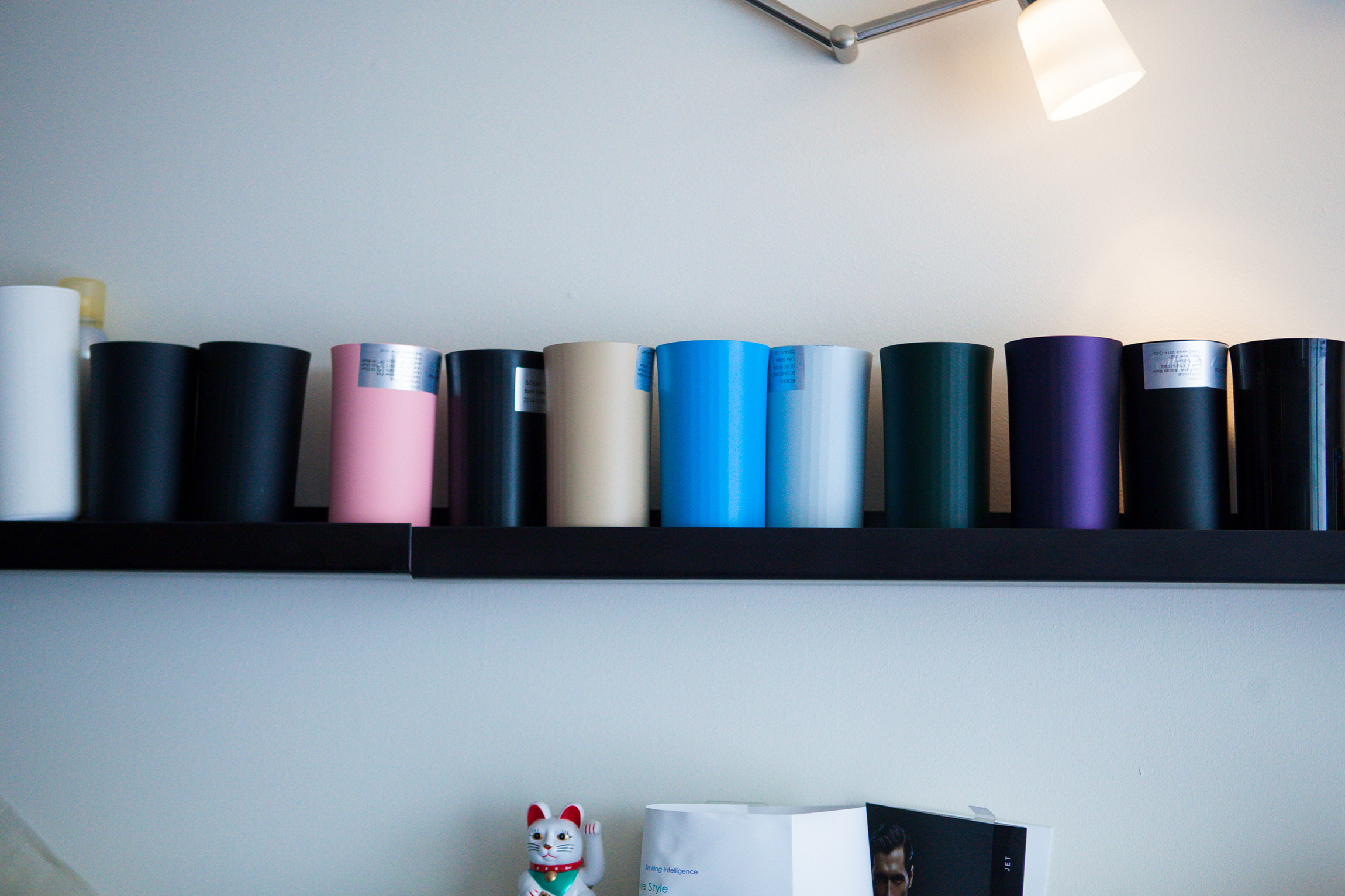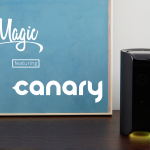Meet Pryme Vessyl: A Brilliantly Simple Product
By Tricina Elliker
AppMagic is back with a third installment in its series, this time we spoke with Nina Walia, Experience Design Director of Pryme Vessyl, a hardware and software combination that’s taking all the guesswork and fuss out of hydration.
At its simplest, the first Mark One product, Pryme Vessyl, is a very smart cup. The product works via a number of sensors built inside the walls and bottom of the cup, the lid, and the coaster. All together, it can tell how much water you’ve poured into the cup and how much you’ve consumed. It also helps you determine your individual “pryme,” which is slang for the amount of daily water intake Pryme Vessyl has determined is ideal for you. And the corresponding app is a great motivator; it also captures your water consumption along with your unique statistics.
You probably grew up believing that you need exactly 8+8-ounce glasses of water each and every day, right? Well, not so fast. Your hydration needs actually depend on your body mass, activity level, biological sex, health issues, and a myriad of other factors. Your hydration levels are constantly fluctuating throughout the day and how much water you need is totally unique to you. Introducing the sleek, innovative Pryme Vessyl.
At first glance, Mark One’s Pryme Vessyl looks just like any travel mug you might pick up. But looks can be deceiving, especially in an era when specs are considered the end all be all of a product. The fewer bells and whistles attached to a product, the more likely critics are to bemoan its uselessness. Even if the product is solving a major health issue, like chronic dehydration.
What a lot of people don’t realize, which Nina Walia is eager to remind us is how often: “Simplicity is utility. A lot of times when you look at health tracking devices or apps, they’re throwing a lot of information at you. But actually they’re not really helping people get to where they need to be,” she says.
Pryme’s hardware was designed to be so simple to use, customers no longer have to stress their hydration levels. Which is exactly the kind of customer experience an IoT product should aspire to bring to the market. The Pryme Vessyl team understood early on that the best health-related devices and apps take care of the complexities in the background, giving the user only the information that is important and helpful.
Customers can also pair their Pryme Vessyl with Apple Health, Fitbit and Jawbone Up making it a holistic lifestyle product. These partnerships make the Pryme app even more exacting when determining user activity data without the need for manual user input.
Letting customers design your product
How does the Pryme team develop an easy-to-use product out of such an involved and complex scenario? By using any and every feedback resource available to them.
“We are very fortunate to have a very engaged community,” Walia says. “Our users who already have the product give us a lot of feedback.” Like any software company, Pryme uses a good deal of automated testing. And more importantly is there internal testing. “We live on the release for a pretty substantial amount of time before we bring it to the public.”
This approach, as it turns out, has helped them in more ways than one.
One of the challenges Mark One encountered while developing Pryme Vessyl was the absolute lack of competitors. Competitors can help a product, if you know how to approach the dynamic. Competitors can be great learning tools, showing you what not to do with your release cycle or customer service strategy.
They can provide you with a base to develop differentiation and fine tune your product before it’s even released. But the team behind Pryme Vessyl had no such luck.
The IoT movement is still brand new, and yet already full of noise. With new products hitting the shelves every day, customers are already inundated with choices. For a company building an IoT product, it’s critical to differentiate. And given the newness of IoT, it’s tempting to relish in the wide open space — forgetting for a moment the immense challenges for anyone who dares to do something truly new. You’re supposed to differentiate, but not so much that customers don’t understand how your product fits in the wider scheme of things.
“We had to work on a lot of hypothesis about what was going to help users,” Walia recalls. “It was a little experimental and different for everyone.”
The team began developing Pryme Vessyl in 2014, using qualitative research to understand the mentality and motivations of their target consumers. From there the strategy was to launch and learn, gathering insights along the way while remaining attentive and responsive to users throughout the process.
Now that the company has a physical product — one that’s been tested by many different people in many different situations, Pryme Vessyl has something to work with. “We are working in this brand new space, that we created,” Walia says. “We don’t know what’s going to come up. So it’s planning for the unknowns and leaving space for them, because there are constantly new things that come up.”
This experience of having no obvious starting point, no giant with shoulders they could stand on, meant that the Pryme Vessyl team had to reach out and ask their target consumer for advice and help along the way. That, in turn, has helped the company create a loyal and vocal following. Word of mouth advertising still reigns, after all. By reaching out, Pryme built a strong bond with the community around them and helped secure their own success.
It’s a strange turn of events when a group of people manages to take an enormous challenge and turn it into their advantage.
Solving customer experience issues before they arise
But just because consumers like to be involved in the development of the product doesn’t necessarily mean they want to be constantly inundated with information every time they use the product.
When it comes to processing information from fitness trackers, the Pryme Vessyl team knew they needed to give the user a clear sense of how they arrived at each individual’s hydration needs without sharing too much information about how they arrived to that particular user’s “pryme.” The team created the app to walk the fine line between being transparent and overly talkative. They developed a feature that visually shows the user how their activity has changed their ideal water intake, without inundating them with data, algorithms, and statistics.
After you’ve created a product that interacts with other products, there are inevitably going to be features you can’t change. Walia confesses that’s one challenge Pryme had to take head on. Fitness trackers, for instance, all send user updates at different intervals. Some of them do so every few minutes, some wait for a quarter of an hour. “One thing we found is that it also varies on each tracker. Some of them give information on an interval, like they might only send information in fifteen-minute increments. So how do we make sure to reflect that to the user as soon as possible? How can we predict based on what we know and how can we reconcile that gap?”
That’s a challenge the company is still solving. They’ve found ways to work around these issues, mostly through smart predictions. But they’re still working on a more exact and permanent fix.
Developing for hardware and software at the same time
With each update, the Pryme team learned one key aspect to keeping the product operating at peak efficiency comes in the way they organize teams. “Initially we had our firmware team under the hardware umbrella and then we had software teams,” Walia says. “And that’s where you can start to get some of those silos happening.” As soon as they noticed the silos beginning to form, the Pryme Vessyl team shook up their organizational structure. The firmware team and the software team merged into one, under the same leadership. Immediately they noticed a difference in the way they function as a group. Merging the software team and firmware team helps them collaborate earlier in the process and allows for more frequent check-ins. “That really helped to make sure that the user experience is much more cohesive and that we have more cohesive release plans.”
Speaking of release plans — From the very beginning, Pryme Vessyl was built to be an affordable product that lasts. “You can put as much as you want into the physical product and…build a rocket ship,” Walia tells. “But we’re conscious of it also being something that people can actually afford. So that’s also part of weighing what goes into this and how much so that it’s at a reasonable consumer price point.”
Price point and lasting power has always been a concern for the Pryme team. They see themselves as a product for everyone.
In the beginning, when the Pryme Vessyl team was discussing different designs for the cup they had extensive conversations about how the communication between the hardware and the software would function. “We wanted to give everybody real time and accurate information.” Yet they also wanted the ability to update the cups on a regular basis and keep the product dynamic.
The Pryme team wanted a product that would last. Even though they worked to keep the price lower than many other IoT products on the market, they wanted to make sure Pryme Vessyl was something customers would continue to use and get value from for years — even after they update the firmware. Much in the same way Tesla built their hardware to include sensors and features that could find new life with new software updates, the Pryme team designed the product with future advancements in mind. They want Pryme Vessyl to evolve with them, finding new life with every software update.
The magic of building for future needs
As the product team looks to the future; there are a few big additions for the next hardware release. The next product: Vessyl, will have added functionality. Most notably, it can not only pull hydration data from products that aren’t water, it will be able to track the nutrition of those drinks too. Users will be able to pour juice, for instance, into the Vessyl cup and the device will still know how much sugar they’re getting from it.
In developing this new product, they’re keeping all the lessons they learned the first time around close at hand. “This is our first product out,” Walia says about Pryme Vessyl. “So as we’re planning our second one we’re using what we’ve learned from this first product.” This time around, the company has more of a jumping off point. They’re implementing user research and focus groups to get a deeper understanding of what customers want from them and how they use the product.
Current customers rave about Pryme Vessyl, they claim to get fewer headaches, say they feel more awake and energized at work. One couple even gave Pryme credit for helping them conceive. As the company continues to evolve and grow, it’ll be an exciting brand to watch.
With their unique approach and ingenuity of design, the Pryme Vessyl team is proving that hardware can be designed with the future in mind. If a company builds for the unknown, firmware and software updates can actually extend the life of the product, add new functionality, and create an entirely new kind of user experience.
Thank you to Nina Walia and the product team for sharing the many challenges associated with a seemingly simple device like Pryme Vessyl. Take a moment to watch their innovative product in the wild. It could be the answer to solving your hydration issues.
See Pryme Vessyl in action:













